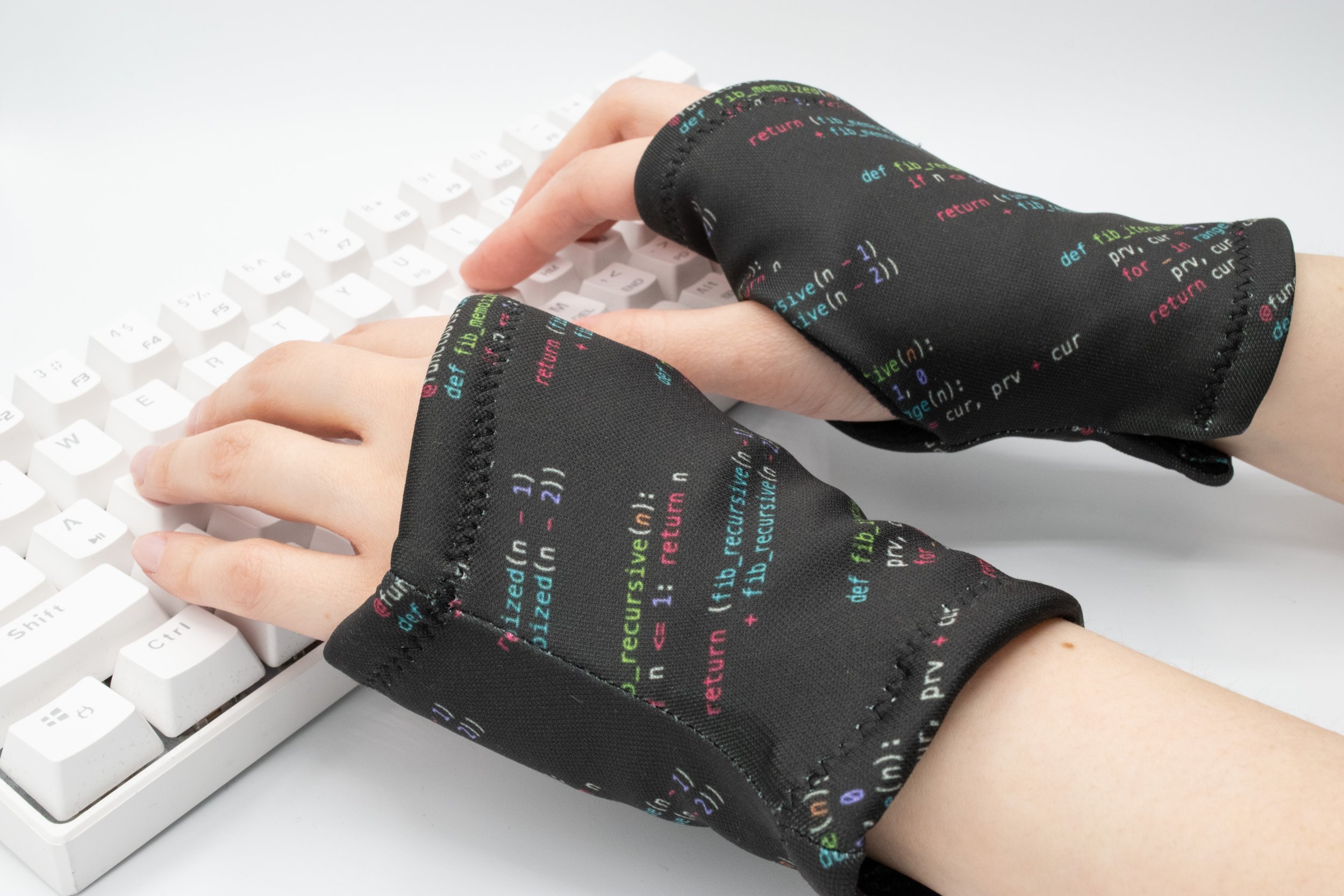5 Easy Tips, Learn about Ergonomics from a Professional
An Introduction, by Julia at Refiber Designs
Pricelda Cid is an awesome Occupational Therapist who specializes in the field of ergonomics. I’m lucky to have her professional input in my products at Refiber Designs. Being proactive about ergonomics is more important than ever in an era where daily computer use is unceasingly expanding in our work and personal lives. Read on for a pragmatic introduction to ergonomics and useful tips from a professional.
I know that some people might be overwhelmed when it comes to working on ergonomics, so I also want to recommend working with Pricelda’s business ErgoTherapy, where she makes ergonomics manageable by customizing an actionable plan for your personal situation—yes she does one-on-one consultations, including remote! Find out more about Pricelda and her business at Ergotherapy.us.
Occupational Therapy & Ergonomics
My name is Pricelda Cid and I am an Occupational Therapist (OT) working in the ergonomic realm. I like to consider that as an OT I bring a distinct take to ergonomics; while I know about fancy chairs and keyboards I also know about injury, specifically hand injuries. Most people are familiar with physical therapist and will usually ask if our practice is similar however, as they generally treat lower extremities injuries we rehabilitate people following strokes, parkinson's disease, musculoskeletal disorders such as carpal tunnel, tendonitis, swan neck deformities and mallet fingers to name a few.
Occupational Therapists focus on upper extremities and while we study anatomy, physiology, psychology we also take other random classes like sewing, pottery and even woodworking. I mention this because it’s not something many people know about Occupational Therapists but as we learn about splinting for hand injuries we relate it to pottery. If you reflect more on it, pottery actually makes total sense since it’s ultimately a fine motor task requiring the use of many of the nerves, muscles and tendons we spend so much time studying. Through participation in crafts of that nature we learned about the therapeutic effects of working with our hands but also just how powerful and multi-functional the hands really are. I, for example, once made a clay taxi cab, with details only the small muscles in my hands and wrist can create. Through this I was able to feel the force placed on the muscles needed to hold a small item in a static position and also experienced the stress placed on the wrist while I carved out tiny windows. I was surprised by how such a small item can put so much stress and wear on many of the muscles and joints in the upper extremities. It's been these experiences in Occupational Therapy that have strengthened my understanding of what is going on with the body, especially when fine motor tasks are involved, which is an integral component to ergonomic evaluations.
Which is where I start to get ergonomic!!
Now with years of experience in the healthcare industry I own my own business, ErgoTherapy. Through ErgoTherapy I work with entrepreneurs and companies to support employees while they work in an office or at home. My main goal as ErgoTherapy has been to teach individuals about their bodies and how their interactions with their workspaces can lead to them feeling crummy or sometimes even injured. Ergonomics is the perfect tool to help people identify the reasons behind their discomforts while working, which generally are awkward work posture.
Through my processes in ergonomics I have learned most awkward postures come from lack of body awareness and poor workstation design. Ergonomics is beneficial because it includes workspace design principles such as office equipment and positioning of that equipment but it also includes other holistic principles such as overall health and work habits. It’s not uncommon to hear an ergonomist ask an individual about the number of times they move through the day and at what times. Most ergonomists understand awkward postures come from lack of awareness during the hustle and bustle of the workday and we work to raise people’s awareness of what is going on in their bodies. While we understand ergonomics can sound confusing to many people we’re here to say it’s just another way for people to learn more about their bodies.
Therefore, in order to help you start thinking about the way you feel through the day I invite you to learn a little more about what is going on in your body with these easy to implement ergonomic tips:
1. Learn about your own working posture.
A good way to get started is to have someone take a side view picture of you and take this picture as a way to see what your body is doing. Are you happy with the way you look?
2. Increase body posture self awareness.
This is paired with tip #1. Work postures are especially difficult for people to correct due to their lack of awareness of the actual problem. People do not generally think of their work posture when they’re busy working hard. After seeing and realizing your work posture is not what you would like it to be setting up your workspace to avoid these postures from the get go can help avoid them. It’s not common for people to correct their posture in their terribly adjusted chair. Learning about correct use of devices can help. You can learn the basics about keyboard use in a video here.
3. Stretch, stretch, stretch!!
Stretching not only feels good but it allows your muscles to work at their best. For example, did you know rounding of the back when using your laptop causes the muscles on the back of your neck to overwork and the muscles along the chest wall work less. Stretching your chest muscles help balance muscle use and decrease over compensation. Stretching through the day can have numerous benefits. You can learn about a quick one minute stretch here.
4. Get to know your body.
Did you know movement is an integral part of our lives? Moving positions through the day help relieve pressure placed on the joints while we sit or stand for too long. Gravity is not our best friend when we are static and shifting our weight around helps distribute those gravitational forces to other parts of our body. Therefore, if you spend time listening to your body, really listening to your body, you will realize your body wants to be in constant motion. That feeling of fidgeting and restlessness is your body's way of telling you to move. Move every time your body asks you and if for some reason, your body isn’t signaling you to get up and move, set a timer for every 30 minutes (get up and walk around for 2 minutes, stretch then get back at it).
5. If you find comfort in something you are using, continue to use it!!!
Remember comfort is a great way to quantify how we are feeling.
You may also like:










